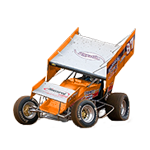Copy link to clipboard
Copied
Hi
For a project I should create a banner of at least 150 DPI. I have been working in Indesign for a while, but don't know how or where to adjust it. I know you can't adjust the DPI, but you can adjust the PPI.
I have already been told that the photos can be edited in Photoshop to get the correct resolution.In addition, the difference between actual and effective PPI is still a mystery to me.
Who can clarify these issues for me?
Thanks in advance!
 1 Correct answer
1 Correct answer
It's crucial to understand the difference between PPI and DPI. Even a lot of pros — and printers — are soggy in their understanding.
DPI, dots per inch, applies only to print. It's the usually the number of ink dots per inch, sometimes confused with the linescreen (LPI, Lines Per Inch, the effective resolution of the print image, usually much less than the DPI).
Everything digital is PPI, Pixels Per Inch, and PPI is something of a phantom number at that. No digital image file has an actual P
...Copy link to clipboard
Copied
It's crucial to understand the difference between PPI and DPI. Even a lot of pros — and printers — are soggy in their understanding.
DPI, dots per inch, applies only to print. It's the usually the number of ink dots per inch, sometimes confused with the linescreen (LPI, Lines Per Inch, the effective resolution of the print image, usually much less than the DPI).
Everything digital is PPI, Pixels Per Inch, and PPI is something of a phantom number at that. No digital image file has an actual PPI (or DPI). Images have pixel dimensions — 1000 x 1600, for example — and any PPI associated with them comes from one of two sources: an arbitrary value assigned to a field by apps like Photoshop, and an effective value from being placed at a particular size in an app like InDesign.
That is, you can take that image and assign it a PPI of 200, but it's only a convenience figure used to load and interpret the image as being a specific layout or print size. You can open it in Photoshop and assign it a PPI of anything between 10 and 10,000, and it won't change the image or file a whit, except for that field and how apps automatically interpret it. But when you lay it into an InDesign layout, the intended print size will set the effective PPI regardless of that field value. If you place that image at 2 print inches wide, it will be effectively 500 PPI; at 3 inches, 333 PPI, and so forth.
You usually want your images to be about double your final DPI. So for your project, any element that is not vector — type, InDesign graphics, most things you would import from Illustrator — must be at least 300 effective PPI. You can lay in some tiny web graphic and scale it up to a foot across, so that it has an effective PPI of about 33, and the output process will upscale it to 150 DPI, but it will be a blur. So if you have a raster graphic you want to print at ten inches across, it should be 10 x 300 or at least 3000 pixels across in the layout.
InDesign has a variety of info panels and such that will show effective PPI, as just described. Learn to rely on those, not the arbitrary PPI value embedded in an image file or other phantom values. And learn to keep an eye on the actual pixel size of images to the exclusion of all other references. (Especially the completely meaningless designations like "a 2K image" or "a six inch image.")
Ask away if that doesn't make it clear.
Copy link to clipboard
Copied
Hi
Thank you for your quick and comprehensive response. English is not my first language, so sorry if I ask something that you already tried to explain or that I misunderstood.
If I understand correctly, I need to enlarge my images to the correct proportions? I created my document in the correct dimensions. Am I doing it correctly then?
Copy link to clipboard
Copied
Your images will print at the size you have placed them within the layout, regardless of their native resolution. If your banner is one foot by four feet and you have a logo image placed at six inches by two feet, that's the size it will print.
However, to have acceptable resolution at that print size, it should be at least 3600 pixels wide (24 x 150) and ideally should be twice that (7200 pixels across). Very big images are needed for most banner and large format printing, which is why it's best to use vector images that have effectively infinite resolution. For things like photos, it's best to use the highest-resolution images you can.
Copy link to clipboard
Copied
If I understand correctly, I need to enlarge my images to the correct proportions? I created my document in the correct dimensions. Am I doing it correctly then?
By @Lien28851630299c
Whether or not you need to enlarge depends on the number of pixels in the images compared to the number of inches they must cover. That’s how we get to pixels per inch.
For example, if you created a photograph at 6000 by 4000 pixels and it needs to cover a banner 10 feet (120 inches) wide, 6000 pixels divided by 120 inches equals 50 pixels per inch. If 6000 by 4000 is the most pixels the camera can record, then the only way for the image to reach 150 pixels per inch across 10 feet is to resample the image up to 18000 pixels wide, because 18000/120 = 150 ppi. For this purpose, in Photoshop there is a Resample option in the Image > Image Size command. (Many large banners and signs look OK with images below 150 ppi if they will be viewed from a long distance, so resampling up is often not necessary.)
The term “effective resolution” exists because InDesign doesn’t resample on the layout, so it can’t change the number of pixels in an image. If you scale up an image on the layout, the same number of pixels is distributed across a larger area, lowering the ppi; if you scale down an image it squeezes the same number of pixels across a smaller area, increasing the ppi. (Because ppi is a way to describe pixel density.) So, if an image is saved from Photoshop at 4 inches wide at 300 ppi, scaling that image in InDesign to 8 inches wide lowers its effective resolution to 150 ppi, and scaling it down to 2 inches wide increases its effective resolution to 600 ppi.
Copy link to clipboard
Copied
Hi @Lien28851630299c , Also, Effective Resolution (or output resolution) is the Actual Resolution (or starting resolution) scaled. When you scale an image in InDesign its pixels are resized not resampled.
Effective Resolution = (100/image scale) x Actual Resolution.
Here the scale is 80% so the pixels are smaller — (100/80) x 150 = 188:
Copy link to clipboard
Copied
in addition to all the detailed replies you received, just wanted to mention that in your case DPI is interchangebale with PPI. "DPI" is just historically established term to refer to image resolution (regardless of the way this acronym is deciphered). it's like people still can use the word "filming" when recording video - while there's no actual film anymore.
Copy link to clipboard
Copied
"DPI" is just historically established term to refer to image resolution
Ancient history—Adobe removed the confusing DPI term in the early versions of Photoshop. The Image Size dialog from PS2 in 1994:
Now DPI is reserved for printer resolution references—from InDesign’s Print>Printer...>Print Settings:
Copy link to clipboard
Copied
Oh yeah I'm aware that the more accurate "pixels-per-inch" terminology is used in the software UI for quite some time.
My point is that in real world, when referring to image resolution, the DPI and PPI acronyms are interchangeable. People have always been referring to image resolution as DPI - and that's just how it is.
I worked in prepress of various print and publishing-related companies from 1993 to 2008. Never, not a single time, I heard anyone using the word "PPI". It's always "DPI". That's what people are used to say when actually referring now to pixels-per-inch, that's how it's been established historically, and it's not going away anytime soon.
Just like we're still using the word "leading" while those lead strips are obviously not being used anywhere for quite some time.
I believe that the actual acronym "ppi" was only introduced in the first Adobe CS release (can't vouch for this but that's how I remember seeing it for the first time).
Now I'm developing software for the same industry for over 15 years. Out of curiosity, I've just searched my email communication with customers from all over the world for the last eight years. And people are still overwhelmingly using "dpi" rather than "ppi". In a ratio of about 7 to 1. That is, "dpi" is used 7 times for each single use of "ppi".
That's why, I believe, it was important to explain to OP that as far as image resolution is concerned, DPI and PPI are interchangeable terms and they mean exactly the same thing (pixels-per-inch). And when he's asked to create a "banner of at least 150 DPI" it means they expect images of 150 effective PPI. Because, once again, in this case these terms are interchangeable and mean exactly the same.
Copy link to clipboard
Copied
Sorry, I completely disagree. While the notion of "how many dots per inch" is generic, the terms are not, no matter how sloppily they might be used 'in the real world.' In the real world, people set up whole books with two styles, stacked tabs and multiple paragraph returns, too... but that doesn't make the practice acceptable.
DPI is dots per inch on a printed image. Nowhere else.
LPI is the effective resolution of DPI on a printed image. The term is used in no other way.
Everything on electronic displays and in raster files, is PPI, a specific term with a specific range of nuances.
The difference matters.
TL;DR form? Pixels and dots aren't the same thing and never have been.
And I've been doing this since very few people had any idea what a pixel was. 🙂
Copy link to clipboard
Copied
I understand your idealistic view. For example, I also dislike that people use "should of" all over the place (even though English isn't my first language). However, whether I like it or not, I should know that it's interchangeable with "should have" - otherwise I'll simply interpret incorrectly what people mean.
Same with DPI/PPI. It doesn't matter what those acronyms actually mean. What's important is what PEOPLE MEAN when they use these terms.
And by saying "dpi" - when referring to image resolution - people mean "pixels-per-inch". And nothing else.
So if, when being told about a "300 dpi" image, we'll keep insisting that it doesn't mean "300 ppi", we'll simply misinterpret what people mean. Which in turn can lead to confusion, wrong actions, and other mistakes.
Copy link to clipboard
Copied
First off, DPI and PPI are not acronyms; they are initialisms! Secondly, they are most definitely not interchangeable. The fact that many people do use them interchangeably doesn't make it correct.
So, please stop spreading this very incorrect "information."
Copy link to clipboard
Copied
I can remember the first version of this discussion was happening in 1989.
With the invention of Postscript and the introduction of high resolution imagesetters, Adobe had to make the distinction because digital halftone screens from an imagesetter are "drawn" with smaller device dots. The print industry was reluctant to make the distinction, because in the early 90s they didn’t think digital halftone screens would replace analog screening from a camera.
Copy link to clipboard
Copied
@BobLevine
In real world, when referring to image resolution, DPI and PPI are interchangeable.
You may argue that it's wrong, and dislike it, but you don't have any control over it - that's just how it is.
What you DO have control over it misinterpret what people say correctly or incorrectly. And the correct interpretation of "dpi" is "ppi" when referring to image resolution. Otherwise you'll misinterpret what people mean.
So I strongly believe that spreading incorrect information is telling people that DPI and PPI are NOT interchangeable. Bcause in real world they are.
As to acronyms vs initialisms, then I'm only following Oxford:
Copy link to clipboard
Copied
In real world, when referring to image resolution, DPI and PPI are interchangeable.
Yes, having spent years in the e-publishing and EPUB blog world, I am one of those aware that misinformation often bordering on nonsense, voodoo and BS abounds out there.
We're not out there.
Copy link to clipboard
Copied
"pronounced as a word." SCUBA, RADAR and NASA are acronyms, PPI and DPI are NOT!
Copy link to clipboard
Copied
"pronounced as a word." SCUBA, RADAR and NASA are acronyms, PPI and DPI are NOT
I see your point. I did some additional research on the subject. There are, indeed, opinions that PPI/DPI are not acronyms as they're not "pronounced as word". However, these are just opinions.
Wikipedia gives more expanded info on the topic.
While there are some disagreements, it's perfectly normal to call DPI/PPI "acronyms".
https://en.wikipedia.org/wiki/Acronym
Copy link to clipboard
Copied
You've done nothing in this discussion except make up your own rules. DPI and PPI, while strongly related are not the same thing and they are most certainly not acronyms! I suggest you stick wth Oxford as your source for this one.
Copy link to clipboard
Copied
I believe that the actual acronym "ppi" was only introduced in the first Adobe CS
Photoshop was making the distinction 10 years earlier—my capture from above is from 1994, Photoshop 2 (not CS2)
Copy link to clipboard
Copied
By @rob day
Photoshop was making the distinction 10 years earlier—my capture from above is from 1994, Photoshop 2 (not CS2)
I'm talking about the actual acronym "ppi". It wasn't used in 1994. I don't remember seeing it before CS.
Copy link to clipboard
Copied
By @rob dayPhotoshop was making the distinction 10 years earlier—my capture from above is from 1994, Photoshop 2 (not CS2)
I don't remember seeing it before CS.
I do. I learned it using Aldus Photostyler and Corel PhotoPAINT.
Copy link to clipboard
Copied
I have a pretty clear recollection of an arm-waving version of this argument over Ventura Publisher and Arts&Letters, ca. 1991. 🙂 My persnickety (young) boss made the point that the apps' use of PPI, while weird, was correct. It was, however, buried in some pretty deep tech settings.
Copy link to clipboard
Copied
It wasn't used in 1994.
This is from the second edition of Designer Photoshop, a book I wrote for Random House in 1992:
Copy link to clipboard
Copied
what i mean is that acronym "ppi" wasn't used in Adobe's UI.
Copy link to clipboard
Copied
When did the phrase "moving the goalposts" come into use?
😉
-
- 1
- 2
Find more inspiration, events, and resources on the new Adobe Community
Explore Now











